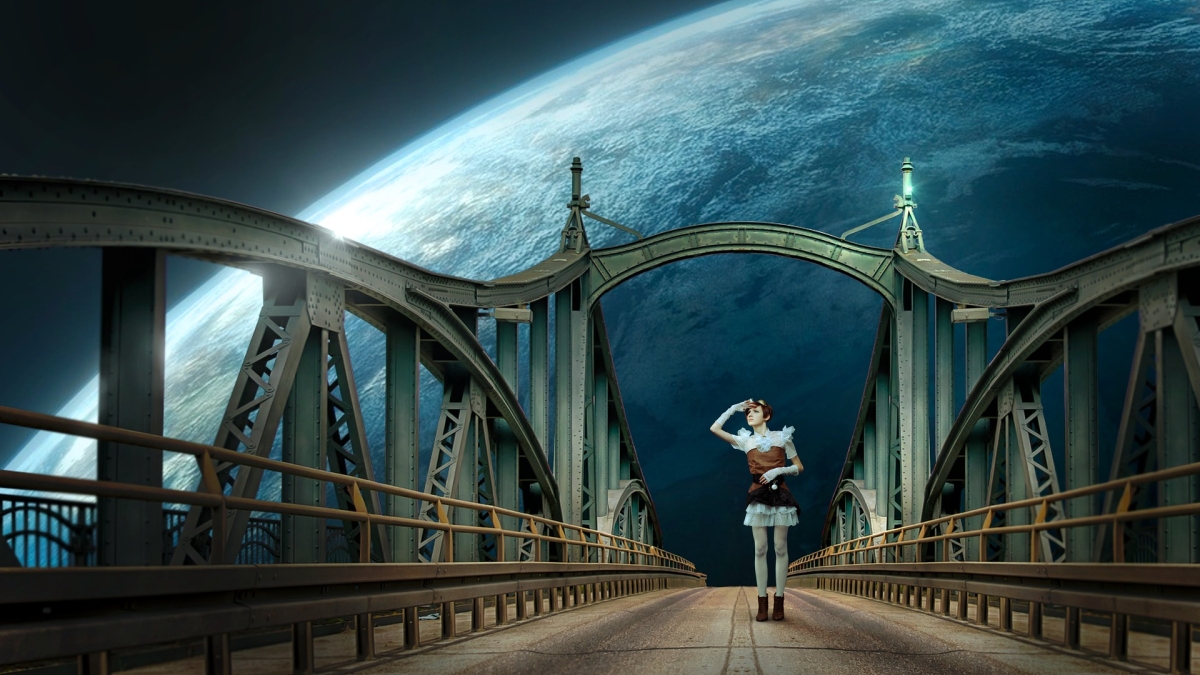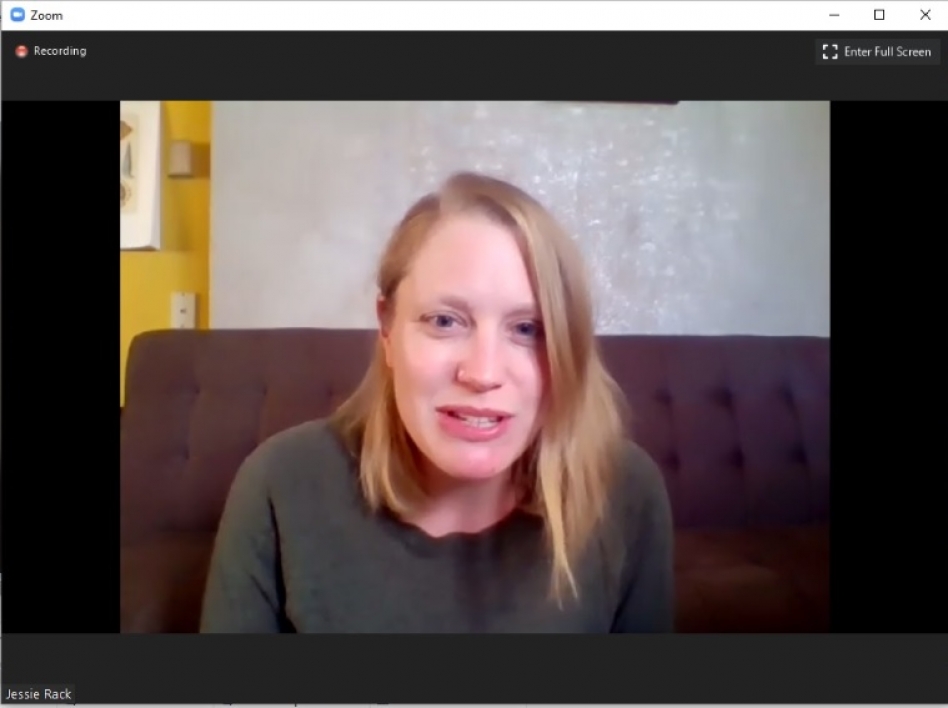Group jam sessions on balconies, banging pots and pans out open windows, drive-by parades, online gatherings on every platform imaginable — across the globe, people have found ways to show appreciation, make connections and keep spirits light, despite a frightening pandemic and the sometimes demoralizing social distancing it requires.
Arizona State University again is contributing to that effort with the launch of Us in Flux, a new series presented by the Center for Science and the Imagination that features stories and virtual discussions about community, collaboration and collective imagination in times of transformative change. Each Thursday, the center publishes an original piece of flash fictionFlash fiction is a type of fiction that is extremely short, generally less than 1,500 words but often just a few hundred words long., and the following Monday at 1 p.m., it hosts an online Zoom conversation between the author and an expert in a field related to the work. The stories are free to read and share, and the events are free and open to everyone.
“Our series, Us in Flux, is interested in the ways that people adapt to transformative events,” said Bob Beard, public engagement strategist for the center. “Whether it’s becoming more self-reliant, building novel solutions to challenges, or finding community in unexpected places, we hope these stories and events help people think about how they might emerge from this crisis as better citizens of a better world.”
In author Kij Johnson’s flash fiction piece for the series, “An Attempt at Exhausting My Deck,” the main character, Linna, finds community in an unexpected place when she begins observing the animal life on the wooden deck of her apartment, where she lives alone. In the discussion that took place Monday, April 20, University of Arizona ecologist Jessie Rack praised the piece for how it demonstrates the foundations of observational science.
“I wasn’t sure when (I was first invited) to be part of this conversation how I fit in, and then I read Kij’s story and was like, ‘Oh my goodness, this is what I do, this is science,’” said Rack, who works with UArizona’s Community and School Garden Program to teach environmental science to K-12 students.
Rack described a lesson she uses to teach kids the scientific method in which she takes them outside and asks them to first write a sentence that begins with “I notice,” in which they describe as many sights, sounds and smells around them as possible. Then they write a second sentence that begins with, “I wonder.”
“That’s it! That’s the scientific method,” Johnson said.
“Yeah, exactly!” Rack replied.
Discussion moderator Joey Eschrich, who is the program manager for the Center for Science and the Imagination, pointed out how one of the center’s goals with its myriad public outreach projects is to help people see their connection with scientific systems through the lens of sci-fi, and that Johnson’s story in particular has the power to “sensitize us to our embeddedness as a species with the natural world” in a time of climate crisis.
“I think backyard nature is about global climate,” Johnson said. “Every form of engagement with the natural world has an implication that’s so much broader.”
It’s the same with fiction writing, she added, explaining how a writer has one sentence to grab the reader’s attention and bring them into the story.
“And so this sort of access point, how we get into a story, is the same way as how we get into thinking about climate change or something else. … It can be anything, but it does require that you just look around. I mean, it could be milkweed pods, because I just noticed those. I’d never seen them in this neighborhood before, but of course we have milkweed pods, we have butterflies, so you have to have milkweed. And things just kind of expand outwards, and if every single one of us cared deeply enough about one part of this world, then that would be plenty.”
Eschrich and Rack both agreed they also saw a theme of community in Johnson’s piece, though she admitted it took her a moment to see it herself.
“When I first heard about this project, I thought, ‘But I don’t have anything to say about community,’” said Johnson, who, like her character Linna, lives alone. “My friends are all over the world, mostly not local, and I’m an introvert, so I like my solitude quite a lot.
But she soon realized that perhaps she felt that way because she was overlooking the less conventional connections she did have with the natural world — something Rack understands.
“As an ecologist, the first thing I think of when someone says community is not about people at all,” Rack said. “I think biological community. (Which) just means all the different interacting species in a particular place. … So to me it’s just so obvious, I’m like, ‘Yes, of course your community is your backyard. And I love that this practice of the character going out on her porch and becoming aware of the community that she’s already a part of is this kind of awakening into the biological definition of community.”
The first story to kick off the Us in Flux series was “The Parable of the Tares” by Christopher Rowe, about food, monoculture and communities that draw together the human and nonhuman. That story and the related discussion between Rowe and Michael Bell, Vilas Distinguished Achievement Professor of Community and Environmental Sociology at the University of Wisconsin-Madison, are now available to read and view at any time on the Us in Flux website, as is Johnson’s “An Attempt at Exhausting My Deck” and the related discussion with Rack. All future stories and videos of related discussions can be accessed for free on the website as well.
The latest piece to be published as part of the series is “When We Call a Place Home,” a utopian tale of historical memory, by Nigerian writer Chinelo Onwualu. Readers can register to participate in the virtual conversation between Onwualu and journalist Robert Evans, which will take place Monday, April 27, at 1 p.m. via Zoom.
Top photo courtesy of Pixabay
More Science and technology

ASU researcher part of team discovering ways to fight drug-resistant bacteria
A new study published in the Science Advances journal featuring Arizona State University researchers has found vulnerabilities in certain strains of bacteria that are antibiotic resistant, just…

ASU student researchers get early, hands-on experience in engineering research
Using computer science to aid endangered species reintroduction, enhance software engineering education and improve semiconductor material performance are just some of the ways Arizona State…

ASU professor honored with prestigious award for being a cybersecurity trailblazer
At first, he thought it was a drill.On Sept. 11, 2001, Gail-Joon Ahn sat in a conference room in Fort Meade, Maryland. The cybersecurity researcher was part of a group that had been invited…


